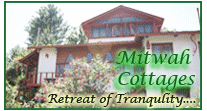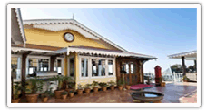|
|
|
| |
Travel destination in India, Coorg |
| |
[ Book Hotels in Coorg] |
[ other Travel Destinations in India ] |
| |
General Information about COORG |
Coorg : City Of Coffee
Area : 4102.3 sq. km
Altitude : 1170 meters
Rainfall : 2725.5-mm annually.
Languages : Kodava-Thak, Kannada, Maliyalam, Tamil, Hindi, English
State : Karnataka
STD Code : 08272(Madikeri), 08274 (Virajpet), 08276 (Somwarpet)
|
About Coorg
From the 2nd to the 6th century, the Kadambas ruled its northern province. The southern parts were successively connected to the Ganga Dynasty from the 4th to the 11th century. After a war with the Gangas in the 11th century, the Cholas emerged as the sole rulers of the whole of Kodagu. During the 12th century the Hoysalas, who were in Belur, Hassan district, drove away the Cholas from Kodagu. From the 14th century, the Vijayanagara Kings ruled supreme. After their fall, the local chieftans or Nayaks and Palegars, became independent and started ruling from wherever they stayed. Later on the Haleri Kings defeated them all and ruled Kodagu from 1600-1834. From then on Kodagu came under the direct rule of the British.
Coorg is situated on the Western Ghats of Karnataka in South India. For the adventurous at heart, it is an absolute treat. There are trekking, golfing and angling (Mahaseer too!) options available. Religious trips abound on Hindu and Buddhist circuits. Family getaways can be easily arranged. You can also relax your body and mind with special Ayurvedic massages. Coorg is also as trendy and happening as its close neighbour Bangalore.
Climate
Coorg enjoys a moderate climate. Winters are pleasantly cool at 15-20 degrees Celsius though during December to February the minimum temperature may go down to 9o C. Summers are only slightly warm at 25-35 degrees Celsius. June, July & August are the months with heavy rainfall. During this season the weather is cool, humid and wet.
MAIN ATTRACTIONS IN COORG
• Kakkabe : Famous for being the largest producer of honey in south east Asia, though most come here for the Padi Igutappa temple. This is Coorg’s most important temple and the presiding deity of the Puthari Festival. Built as a hunting lodge, the Nalnad Palace is used as a kiddies’ camp, though no one will really mind you pottering around. You could also visit the honey farms.
• Madikeri : The capital of Coorg formerly called Mercara, Madikeri is often known as the Scotland of India. It has enchanted millions of travellers with its misty hills, lush forests, coffee plantations and breath taking views. Also known for its lovely climate, Madikeri is a world record holder for the cardamom crop.
•Omkareshwara Temple : With a dome in the middle of a square lake and minarets at each corner, this is a catholic mix of Keralite, Gothic and Islamic architectural styles. Built in 1820 by King Lingarajendra.
•Cauvery Nisargadhama : A great place to cuddle up for the night. This 2.5 sq. km. large island in the middle of the River Cauvery, is some place to romance.
• Bhagamandala & Telecauvery : At the convergence of the rivers Cauvery, the underground Sujyothi and the Kanike, the Bhangandeshwara temple here has a distinct Kerala touch. Because of the three rivers, it is also called Triveni Sangama. The serene temple has intricate carvings and a copper roof. A dip at the Triveni Sangam nearby is supposed to revive sagging spirits, but take prior permission at the temple. Every October 17, on Tulasankranama, thousands come here to swim and pray. For this is Telecauvery (meaning Head of the Cauvery), the origin of one of the seven sacred rivers. The source of this long river, which passes through two states, is on the top of the hill called Brahmagiri. It is 1535 metres above sea level. Steps lead up to the Brahmagiri peak, from where a panoramic view of Kodagu meets the visitor.
•Nagarhole National Park : Created from a former raja’s hunting grounds, Nagarahole is one of the best game sanctuaries in South India, providing a natural living conditions to several wild animals like elephants, tigers, panthers, rhinos and wild elephants, but one is more likely to see smaller game like gaur, deer, wild dogs and langur. Pleasantly cool round the year, it is a little difficult to reach, which makes it quieter than other parks. This in turn makes it a great place to relax. Jungle safaris are available as elephant rides.
• Irpu Falls : This is more a hike than a holiday (there are people like us out there who take these differences very seriously). You could begin from behind the Rameshwarna temple, and relax at a refreshing pond halfway up the falls. Then, if you are some strange sort of enthusiastic trekker and have some spare RBC (the leeches demand that), carry on to the top.
|
|
|
|
|
|







